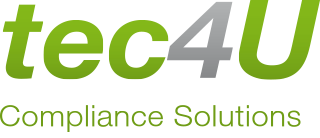1. Commission to revise EN IEC 63000
DIN EN IEC 63000 is an international standard that specifies the technical documentation requirements for demonstrating compliance with restrictions on hazardous substances in electrical and electronic equipment. Test reports to confirm or substantiate the presumption of conformity are not mandatory, so that a statement of conformity based on the supplier confirmation is the standard case in practice.
The revision order serves to adapt DIN EN IEC 630000 to the state of the art and to implement Decision 768/2008, which is intended in particular to clarify the issue of a mandatory test report. According to the European Commission (EC), these test reports should always become mandatory if there is a risk associated with a component. In the opinion of the EC, a risk can be assumed if, among other things:
1. there is a risk that the requirements of Directive 2011/65/EU will not be met
2. an exemption from Annex III or IV is utilised or the specified maximum concentration is exceeded
3. there is a risk of confusion with the points already mentioned (1+2)
Further information can be found at https://ec.europa.eu/docsroom/documents/63214
2. PFAS in France
On 20 February 2025, the French parliament passed a ban on certain products containing perfluorinated and polyfluorinated alkyl substances (PFAS). From 2026, the manufacture, import, export and sale of wax products, cosmetics, consumer textiles and footwear including waterproofing agents containing PFAS will be prohibited. For textiles in general, this ban will come into force from 2030. Further information: https://www.assemblee-nationale.fr/dyn/16/textes/l16b2229_proposition-loi#
3. EMRT 2.0 – Expansion to include copper, graphite, lithium and nickel
The new version of the Extended Minerals Reporting Template (EMRT) 2.0 was published in April 2025. This version expands the focus to four additional responsible raw materials: copper, graphite, lithium and nickel.
The EMRT, developed by the Responsible Minerals Initiative (RMI), offers companies a standardised way to record and communicate information on the origin of minerals in their supply chains. So far, the template has been used for mica and cobalt; in future, the four raw materials mentioned will be added.
Further information can be found at https://www.responsiblemineralsinitiative.org/reporting-templates/emrt/
The extension is particularly relevant for industries such as electromobility and electronics, where these materials are becoming increasingly important. The new requirements help to improve traceability and transparency in global supply chains.
With DataCross, companies can efficiently capture the new EMRT data and automatically convert it into a consolidated EMRT document. This facilitates the implementation of the extended requirements and ensures seamless compliance.
Further information on DataCross can be found here: https://data-cross.de/en/datacross-home/
4. EU Packaging Regulation
The EU Packaging Regulation was published in the Official Journal of the EU on 22 January 2025 under the number 2025/40 and came into force on 11 February 2025. However, the start of its validity has been postponed until 12 August 2026. The first important obligations will come into force from this date. The new Packaging Ordinance sets out additional requirements for the substances in packaging and their recyclability, in particular by introducing limit values for the concentrations of lead, cadmium, mercury and hexavalent chromium. The concentration of these 4 heavy metals was already limited to 100 mg/kg by the Packaging Directive. From 12 August 2026, packaging that comes into contact with food may only be placed on the market if it does not exceed the following PFAS concentrations
– 25 ppb for each specifically analysed PFAS (excluding polymeric PFAS);
– 250 ppb for the sum of PFAS measured as the sum of the targeted analysis of PFAS (excluding polymeric PFAS),
– 50 ppm for PFAS (including polymeric PFAS); if the total fluorine content exceeds 50mg/kg.
Further information can be found at:
https://environment.ec.europa.eu/topics/waste-and-recycling/packaging-waste_en
5. US Environmental Protection Agency (EPA) extends PFAS reporting deadlines again
Once again, the US Environmental Protection Agency (EPA) has postponed the reporting deadlines under the Toxic Substance Control Act (TSCA) Section 8(a) (7) for the reporting of PFAS compounds or articles containing PFAS exported to the USA in the period from 1 January 2011 to 31 December 2022. The planned period in which it will be possible to submit information in the future is 13 April 2026 to 13 October 2026. Small companies that only have to report data on the import of PFAS contained in articles have until 13 April 2027.
Further information can be found at: https://www.epa.gov/assessing-and-managing-chemicals-under-tsca/tsca-section-8a7-reporting-and-recordkeeping
